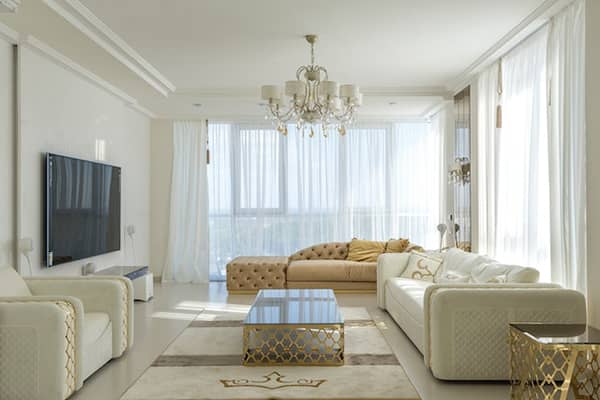Castle and palace have long captured our imaginations with their grandeur, history, and mystique. Though often used interchangeably, these structures serve distinct purposes and symbolize different aspects of societal and architectural heritage. This article explores the key differences and similarities between castles and palaces, offering a deep dive into their historical, cultural, and architectural contexts.
What is a Castle?
Definition and Origins
A castle is a fortified residence, typically built for defense and military purposes. The term originates from the Latin word “castellum,” meaning fort. Castles emerged predominantly in medieval Europe and the Middle East as strongholds for nobility and their retinues.
Architectural Features
- Defensive Structures: Castles are designed with thick walls, battlements, and towers to withstand sieges. Features like moats, drawbridges, and gatehouses add layers of protection.
- Strategic Locations: Often built on elevated ground or near water bodies, castles utilize natural features for defense.
- Functional Spaces: Inside, castles include living quarters, armories, stables, and chapels, all organized around a central courtyard or bailey.
Historical Context
- Medieval Period: Castles served as centers of control for feudal lords, offering refuge and overseeing local territories. They were instrumental during periods of conflict, providing secure bases for military operations.
- Evolution: Over time, as warfare techniques evolved and the need for fortifications diminished, some castles were adapted for more comfortable living, blending military and residential functions.
Examples of Castles
- Windsor Castle: A prominent example in England, Windsor Castle combines defensive features with royal residence, showcasing the evolution of castles from military to ceremonial use.
- Neuschwanstein Castle: Known for its fairy-tale appearance, this German castle reflects romanticized medieval architecture, designed more for aesthetic appeal than defense.
What is a Palace?
Definition and Origins
A palace is a grand residence, primarily designed for luxury and to exhibit wealth and power. The term comes from Rome’s Palatine Hill, where emperors built their opulent homes.
Architectural Features
- Lavish Designs: Palaces are characterized by elaborate architectural styles, including ornate facades, expansive gardens, and luxurious interiors.
- Non-Defensive: Unlike castles, palaces lack defensive features. Their construction focuses on comfort, aesthetic appeal, and grandeur.
- Functionality: Palaces often contain state rooms, ballrooms, and reception halls, designed for entertaining and ceremonial purposes.
Historical Context
- Symbol of Power: Palaces have been used by monarchs, bishops, and state leaders to demonstrate their wealth and status. They served as administrative centers and venues for hosting dignitaries.
- Cultural Influence: The design and decoration of palaces often reflect the artistic and cultural values of their time, making them symbols of architectural innovation and patronage.
Examples of Palaces
- Buckingham Palace: The official residence of the British monarch, Buckingham Palace epitomizes regal opulence and serves as a central venue for state occasions.
- Palace of Versailles: Located in France, Versailles is renowned for its extravagant architecture, extensive gardens, and role in European history as a symbol of absolute monarchy.
Key Differences Between Castle and Palace
| Aspect | Castle | Palace |
| Primary Purpose | Defense and protection | Display of wealth and power |
| Architectural Features | Thick walls, battlements, moats, towers | Ornate facades, gardens, luxurious interiors |
| Historical Context | Medieval strongholds for nobility | Residences for royalty and high-ranking officials |
| Location | Strategic, often elevated or near water | Central or prestigious urban or rural settings |
| Materials Used | Robust materials like stone and brick | Precious materials like marble and gold |
| Design Focus | Military functionality | Aesthetic appeal and comfort |
Similarities Between Castle and Palace
- Architectural Grandeur: Both castles and palaces are remarkable for their size and splendor. They represent the pinnacle of architectural achievement in their respective contexts, whether for defense or opulence.
- Historical Significance: These structures are key historical markers, reflecting the political, social, and cultural dynamics of their eras. They often serve as museums or tourist attractions today, offering insights into the past.
Residences for the Elite Both were designed to house the elite, though their functions varied. Castles accommodated nobility and their protectors, while palaces were homes to monarchs, bishops, and state leaders.
FAQs on Castle and Palace
Why were castles primarily built in Europe and the Middle East?
Castles were mostly built in Europe and the Middle East due to the political and social circumstances of the Middle Ages. They served as fortified residences for nobles and their protectors, offering security during times of conflict and uncertainty.
Are there castles that are also considered palaces?
Yes, some structures combine the defensive features of castles with the luxury of palaces. These are often termed “palace fortresses”. An example is the Alhambra in Spain, which was both a fortress and a royal palace.
How did the construction materials differ between castles and palaces?
Castles were built for durability and protection, typically using robust materials like stone or brick. On the other hand, palaces prioritized aesthetics and were constructed with precious materials such as marble and gold.
Do any palaces predate castles?
Yes, the history of palaces extends further back than that of castles. The Palace of Knossos on Crete, dating back to around 1950 BCE, is considered to be one of the earliest known palaces.
Can I visit both castles and palaces today?
Absolutely! Many castles and palaces have been preserved or restored and are open to the public. These structures provide a fascinating insight into different periods of history, architectural styles, and the lives of their past inhabitants.
Castle and Palace: Final Thoughts
In essence, the distinction between a castle and a palace lies in their primary functions and architectural designs. Castles are fortified structures built for defense, typically constructed during the medieval period to protect against invasions and maintain control over territories. They feature robust defensive elements such as thick walls, moats, and battlements, which reflect their purpose as military strongholds. Castles often served as both residences and fortresses for nobility, providing refuge and asserting dominance in a feudal society.





